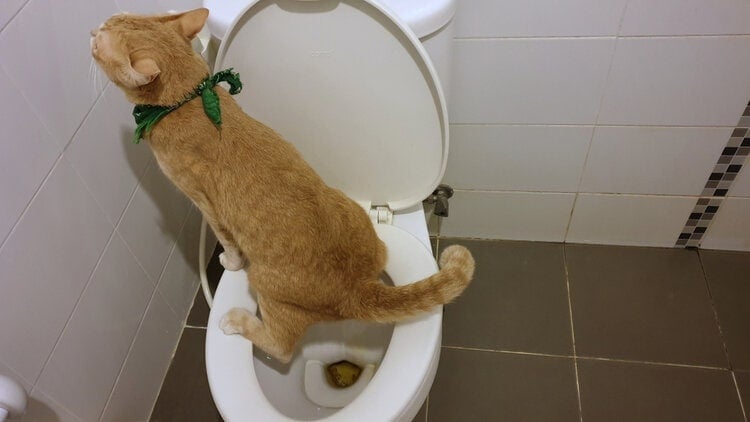Potential Issues of Flushing Cat Poop Down Your Toilet - Protect Your Plumbing
Potential Issues of Flushing Cat Poop Down Your Toilet - Protect Your Plumbing
Blog Article
Are you currently hunting for advise about How to Dispose of Cat Poop and Litter Without Plastic Bags?

Introduction
As feline owners, it's essential to be mindful of just how we dispose of our feline good friends' waste. While it may appear convenient to flush cat poop down the toilet, this technique can have detrimental effects for both the setting and human health and wellness.
Alternatives to Flushing
Luckily, there are more secure and more responsible ways to deal with pet cat poop. Consider the following choices:
1. Scoop and Dispose in Trash
The most common approach of throwing away feline poop is to scoop it right into a biodegradable bag and throw it in the garbage. Make certain to use a dedicated clutter inside story and throw away the waste quickly.
2. Usage Biodegradable Litter
Go with biodegradable cat clutter made from products such as corn or wheat. These clutters are environmentally friendly and can be securely gotten rid of in the garbage.
3. Bury in the Yard
If you have a yard, consider burying pet cat waste in a marked area away from veggie gardens and water sources. Be sure to dig deep adequate to prevent contamination of groundwater.
4. Install a Pet Waste Disposal System
Buy a family pet garbage disposal system specifically made for feline waste. These systems make use of enzymes to break down the waste, decreasing smell and environmental influence.
Health Risks
Along with environmental concerns, flushing cat waste can additionally position wellness dangers to human beings. Cat feces may include Toxoplasma gondii, a bloodsucker that can cause toxoplasmosis-- a possibly severe disease, especially for expecting women and people with weakened body immune systems.
Environmental Impact
Flushing pet cat poop introduces dangerous pathogens and bloodsuckers into the water, posing a substantial threat to aquatic communities. These contaminants can adversely impact aquatic life and compromise water high quality.
Conclusion
Responsible animal possession prolongs past providing food and sanctuary-- it likewise includes proper waste management. By avoiding purging feline poop down the commode and selecting different disposal methods, we can lessen our ecological impact and secure human wellness.
Why Can’t I Flush Cat Poop?
It Spreads a Parasite
Cats are frequently infected with a parasite called toxoplasma gondii. The parasite causes an infection called toxoplasmosis. It is usually harmless to cats. The parasite only uses cat poop as a host for its eggs. Otherwise, the cat’s immune system usually keeps the infection at low enough levels to maintain its own health. But it does not stop the develop of eggs. These eggs are tiny and surprisingly tough. They may survive for a year before they begin to grow. But that’s the problem.
Our wastewater system is not designed to deal with toxoplasmosis eggs. Instead, most eggs will flush from your toilet into sewers and wastewater management plants. After the sewage is treated for many other harmful things in it, it is typically released into local rivers, lakes, or oceans. Here, the toxoplasmosis eggs can find new hosts, including starfish, crabs, otters, and many other wildlife. For many, this is a significant risk to their health. Toxoplasmosis can also end up infecting water sources that are important for agriculture, which means our deer, pigs, and sheep can get infected too.
Is There Risk to Humans?
There can be a risk to human life from flushing cat poop down the toilet. If you do so, the parasites from your cat’s poop can end up in shellfish, game animals, or livestock. If this meat is then served raw or undercooked, the people who eat it can get sick.
In fact, according to the CDC, 40 million people in the United States are infected with toxoplasma gondii. They get it from exposure to infected seafood, or from some kind of cat poop contamination, like drinking from a stream that is contaminated or touching anything that has come into contact with cat poop. That includes just cleaning a cat litter box.
Most people who get infected with these parasites will not develop any symptoms. However, for pregnant women or for those with compromised immune systems, the parasite can cause severe health problems.
How to Handle Cat Poop
The best way to handle cat poop is actually to clean the box more often. The eggs that the parasite sheds will not become active until one to five days after the cat poops. That means that if you clean daily, you’re much less likely to come into direct contact with infectious eggs.
That said, always dispose of cat poop in the garbage and not down the toilet. Wash your hands before and after you clean the litter box, and bring the bag of poop right outside to your garbage bins.
https://trenchlesssolutionsusa.com/why-cant-i-flush-cat-poop/

As an avid reader on Can You Flush Cat Poo or Litter Down the Toilet?, I thought sharing that piece of content was smart. Please take a moment to share this page if you appreciated it. Many thanks for taking the time to read it.
Detail Report this page